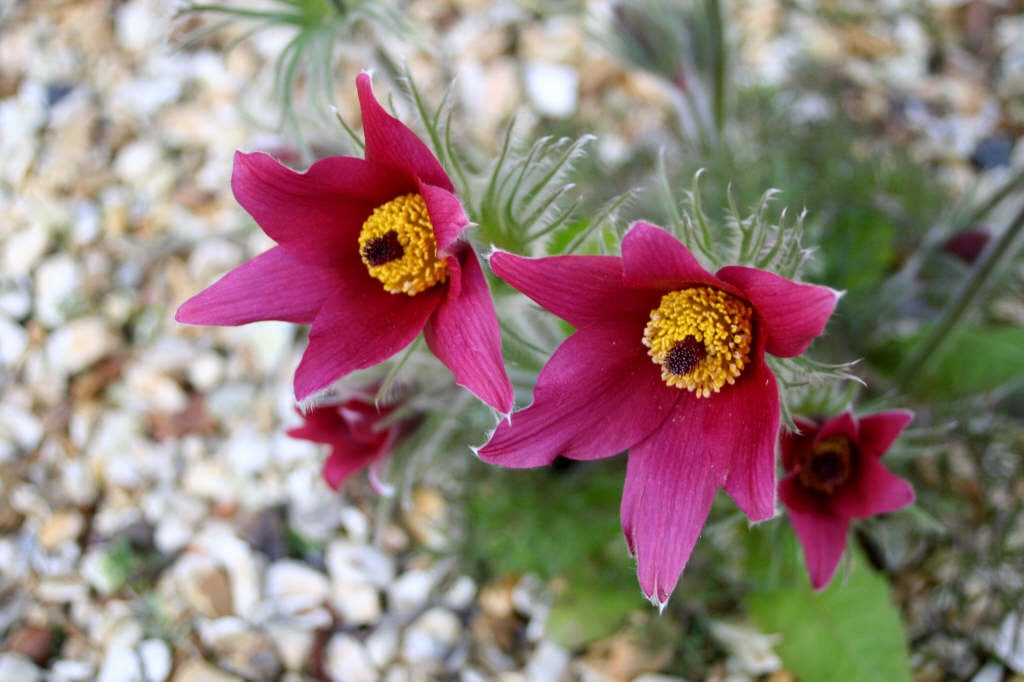Pulsatilla rubra
red pasqueflower
A clump-forming perennial to 20cm tall, with silky-hairy leaves much divided into linear lobes, and solitary, nodding bell-shaped dusky red flowers 6-8cm wide opening in spring
Size
Ultimate height
0.1–0.5 metresTime to ultimate height
2–5 yearsUltimate spread
0.1–0.5 metresGrowing conditions
Moisture
Well–drainedpH
Acid, Alkaline, NeutralColour & scent
| Stem | Flower | Foliage | Fruit | |
| Spring | Red | Green | ||
|---|---|---|---|---|
| Summer | ||||
| Autumn | ||||
| Winter |
Position
- Full sun
Aspect
South–facing
Exposure
Exposed or Sheltered Hardiness
H5Botanical details
- Family
- Ranunculaceae
- Native to GB / Ireland
- No
- Foliage
- Deciduous
- Habit
- Bushy
- Genus
Pulsatilla are herbaceous perennials forming clumps of finely dissected leaves, with solitary, hairy bell-shaped or cup-shaped flowers followed by silky-plumed seed-heads
- Name status
Correct
- Plant range
- Europe
How to grow
Cultivation
Pulsatillas thrive in a well-drained, fertile soil in full sun. Winter wet is to be avoided. Once established they dislike being moved
Propagation
Propagate by seed sown as soon as ripe. Basal or root cuttings may be possible, but are challenging
Suggested planting locations and garden types
- City and courtyard gardens
- Cottage and informal garden
- Gravel garden
- Rock garden
- Patio and container plants
- Flower borders and beds
Pruning
No pruning required
Pests
Generally pest-free
Diseases
Generally disease-free
Get involved
The Royal Horticultural Society is the UK’s leading gardening charity. We aim to enrich everyone’s life through plants, and make the UK a greener and more beautiful place.
